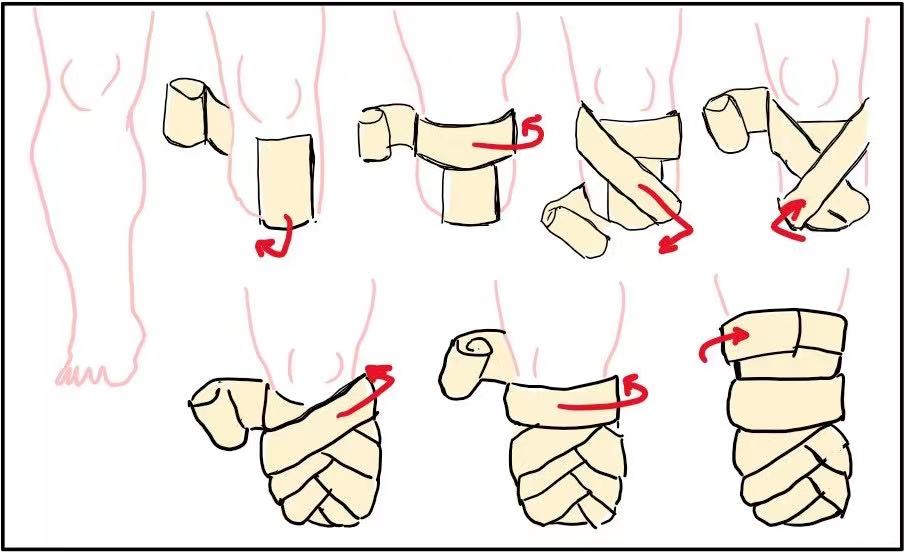What is a crape bandage?
A crepe bandage is a stretchy, cotton, a soft woven bandage that is used as a compression wrap for after amputation, sports injuries and sprains or to cover a wound dressing.
Advantages, features & benefits of crape bandage?
Bandaging your stump keeps the limb from swelling.
And it shapes it so that it fits more comfortably in prosthesis.
High-quality woven stretch material
Can also be used for dressing retention
Provides padding and protection
Strong, stretchy and soft to provide comfort and support
Washable and therefore reusable
Individually wrapped
Available in 4 sizes
Textured surface
After your amputation you have to consult with your doctor, physiotherapy or a prosthetist.
Medicowesome: Below Knee Amputation stump bandaging
What do you need to check if you are doing crape bandaging for yourself or some other person?
Use 1 or 2 clean 4-inch elastic bandages each day.
You may want to sew them together end to end if you using two bandage.
Sit on the edge of a firm bed or chair. As you wrap, keep your knee extended on a stump board or chair of the same height.
Always wrap in a diagonal direction (figure of 8).
Wrapping straight across the limb can cut off the blood supply.
Keep the tension greatest at the end of the limb. Gradually reduce the tension as you work up the lower leg.
Make sure there are at least 2 layers of bandage and that no layer directly overlaps another. Keep the bandage free of wrinkles and creases.
Be sure there is no puckering or bulging of the skin. Check to make sure that all the skin below the knee is covered. Don’t cover the kneecap.
Rewrap the limb every 4 to 6 hours, or if the bandage starts to slip or feel loose.
Tingling or throbbing anywhere in the limb may be a sign that the tension is too tight. Rewrap the bandage, using less tension.

When to call your healthcare provider?
Call your healthcare provider right away if you have any of these:
Redness at the end of the stump that does not go away
Bad odor from the stump (example-bad-smelling)
Swelling or increasing pain at the end of the stump
More than usual bleeding or discharge from the stump
Stump that has a chalky white or blackish color
Post time: Oct-28-2021
